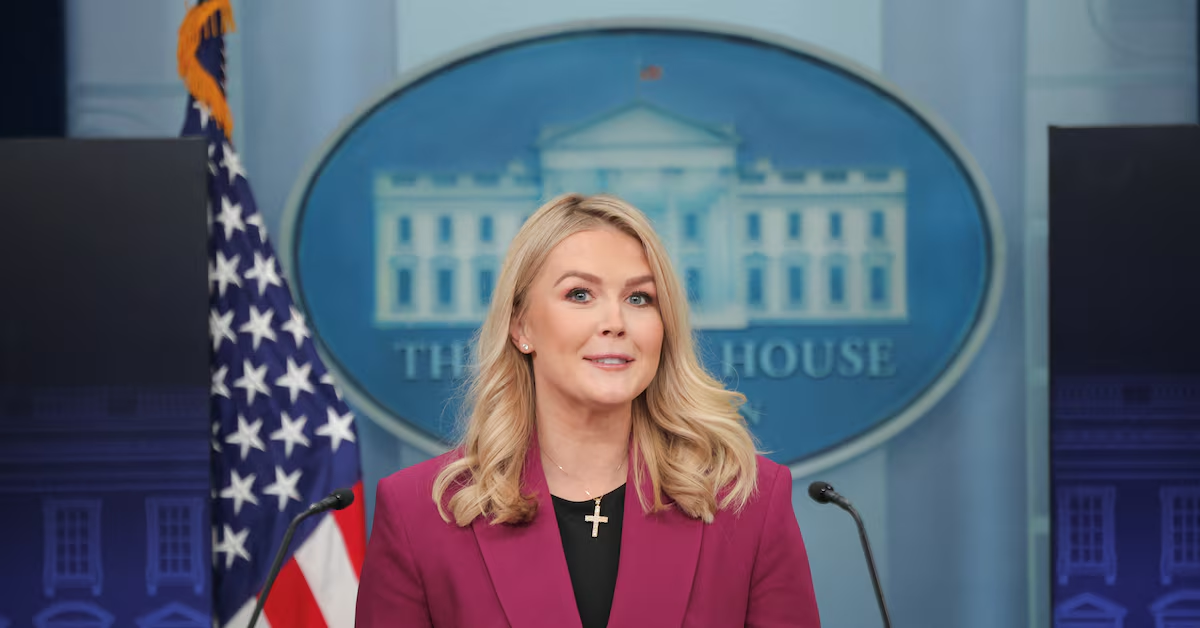Federal Workforce Reform Initiative Sparks National Debate Over Government Efficiency
The intersection of federal employment policy and government reform has become a focal point of national political discourse, as the current administration implements significant changes to federal workforce management strategies. Recent policy announcements have generated substantial discussion among government employees, labor organizations, policy analysts, and taxpayers who are closely monitoring developments in federal workforce restructuring initiatives.
The comprehensive approach to federal workforce optimization represents one of the most significant policy shifts in government employment practices in recent years. These initiatives reflect broader conversations about government efficiency, fiscal responsibility, and the evolving nature of public sector employment in an increasingly digital and remote-work-oriented professional landscape.
Understanding the implications of these workforce policy changes requires examination of multiple factors, including budgetary considerations, employee rights and protections, organizational efficiency metrics, and the long-term impact on government service delivery. The complexity of federal employment systems makes any significant policy modification a subject of intense scrutiny from various stakeholders across the political spectrum.
Policy Framework and Implementation Strategy
The federal workforce initiative represents a systematic approach to addressing what administration officials describe as inefficiencies in government operations and fiscal management. The program structure includes provisions for voluntary workforce reduction through enhanced separation packages, designed to provide eligible federal employees with financial incentives to voluntarily separate from government service.
White House Press Secretary Karoline Leavitt has been instrumental in communicating the administration’s position on these workforce reforms, emphasizing that the initiatives are primarily focused on cost reduction and operational efficiency rather than targeting specific employee groups or political perspectives. Her public statements have sought to clarify misconceptions about the program’s intent and scope.
The “deferred resignation program” component of the initiative allows eligible federal employees to voluntarily accept separation packages that include enhanced benefits and compensation arrangements. This approach is designed to reduce the federal workforce through voluntary means while providing affected employees with transition support and financial incentives that exceed standard separation benefits.
Policy implementation involves coordination between multiple federal agencies, human resources departments, and congressional oversight committees to ensure compliance with federal employment law and established procedures for workforce management. The systematic approach reflects careful consideration of legal requirements, budgetary constraints, and operational continuity needs.
Administration officials have emphasized that participation in the program is voluntary, with no employees being required to accept separation packages or modify their current employment arrangements. This voluntary framework is designed to address concerns about potential coercion or discriminatory implementation that could violate federal employment protection statutes.
Budgetary Implications and Fiscal Analysis
The financial components of the federal workforce initiative represent significant budgetary considerations that extend beyond immediate separation costs to include long-term savings projections and operational efficiency improvements. Economic analysis of the program involves complex calculations regarding salary savings, benefit reductions, and productivity metrics that will determine the overall fiscal impact.
Government efficiency experts note that voluntary workforce reduction programs can generate substantial savings when properly implemented, particularly in situations where operational redundancies exist or where technological improvements have reduced personnel requirements. The key to successful implementation lies in ensuring that essential government functions remain adequately staffed while eliminating positions that no longer contribute optimal value.
The enhanced separation packages offered through the program represent upfront costs that must be balanced against projected long-term savings from reduced payroll expenses, benefit obligations, and facility requirements. Financial modeling indicates that these programs typically achieve positive return on investment within two to three years, depending on the scope and scale of participation.
Budget analysts emphasize the importance of maintaining adequate funding for essential government services while pursuing efficiency improvements through workforce optimization. The challenge lies in achieving cost savings without compromising service delivery quality or regulatory compliance capabilities that protect public interests.
Congressional budget oversight committees have expressed interest in monitoring the program’s implementation to ensure that projected savings materialize and that essential government functions continue to operate effectively. This oversight role reflects the constitutional responsibility for legislative branch review of executive branch fiscal management decisions.
Federal Employee Rights and Labor Relations
The implementation of voluntary workforce reduction programs must comply with extensive federal employment law protections and collective bargaining agreements that govern federal employee rights and benefits. Labor relations considerations play a crucial role in ensuring that workforce management initiatives are implemented fairly and in accordance with established legal frameworks.
Federal employee unions have expressed concerns about the potential impact of voluntary separation programs on workforce stability, institutional knowledge retention, and the ability of government agencies to fulfill their statutory mandates effectively. Union representatives emphasize the importance of maintaining adequate staffing levels for essential government functions.
The legal framework governing federal employment includes provisions for due process, equal treatment, and protection against discriminatory practices that must be carefully observed during program implementation. These protections ensure that participation in voluntary separation programs is genuinely voluntary and not influenced by coercive or discriminatory factors.
Employee benefits considerations include ensuring that workers who choose to participate in separation programs receive all entitled compensation, retirement benefits, and health insurance continuation options. The complexity of federal benefit systems requires careful coordination to ensure that departing employees are properly informed about their options and rights.
Professional development and career transition support services are being made available to federal employees who choose to participate in separation programs, recognizing that many experienced government workers may require assistance in transitioning to private sector employment or other career opportunities.
Political Response and Public Opinion
The announcement of federal workforce initiatives has generated significant political commentary from both supporters and critics, reflecting broader partisan divisions about the appropriate size and scope of federal government operations. Political responses have varied along predictable ideological lines, with different perspectives on government efficiency and public sector employment.
Supporters of the initiative argue that voluntary workforce reduction programs represent fiscally responsible approaches to government reform that can reduce taxpayer burden while maintaining essential services. They emphasize the voluntary nature of the programs and the enhanced benefits provided to participating employees as evidence of fair and humane implementation.
Critics have raised concerns about potential impacts on government service delivery, institutional knowledge loss, and the possibility that workforce reductions could compromise regulatory oversight and public safety functions. They argue that experienced federal employees provide valuable expertise that cannot be easily replaced.
Public opinion polling indicates mixed reactions to federal workforce initiatives, with responses generally correlating with broader attitudes about government size and efficiency. Taxpayers express support for cost-saving measures while also valuing effective government services and regulatory protections.
Media coverage of the initiatives has focused on both the policy mechanics and the political implications, with different news outlets emphasizing various aspects of the program depending on their editorial perspectives and target audiences.
Long-term Implications for Government Operations
The broader implications of federal workforce initiatives extend beyond immediate budgetary considerations to encompass questions about the future structure and capabilities of federal government operations. Long-term planning must consider how workforce changes will affect the government’s ability to respond to emerging challenges and fulfill evolving public service requirements.
Technological advancement and automation present both opportunities and challenges for federal workforce planning, as some traditional government functions can be streamlined through improved systems while new capabilities may require different skill sets and expertise areas.
Succession planning becomes particularly important when experienced federal employees choose to participate in voluntary separation programs, requiring agencies to ensure that critical institutional knowledge is documented and transferred to remaining staff or new hires.
The competitive landscape for skilled professionals means that federal agencies must balance cost reduction objectives with the need to attract and retain qualified employees who can effectively serve public interests in complex regulatory and policy environments.
Conclusion: Balancing Efficiency and Effectiveness
The federal workforce initiatives announced by the current administration represent a significant policy development that will have lasting implications for government operations, fiscal management, and public service delivery. The success of these programs will ultimately be measured by their ability to achieve cost savings while maintaining effective government functions that protect public interests.
The voluntary nature of the separation programs reflects recognition of the importance of maintaining employee rights and protections while pursuing efficiency improvements. Careful implementation and oversight will be essential to ensure that the programs achieve their intended objectives without compromising essential government capabilities.
As these initiatives move forward, continued monitoring and evaluation will provide valuable insights into the effectiveness of voluntary workforce reduction as a tool for government reform. The lessons learned from this experience will inform future policy decisions about federal workforce management and government efficiency initiatives.
The balance between fiscal responsibility and effective government operations remains a central challenge in democratic governance, requiring thoughtful policy development and implementation that serves both taxpayer interests and public service missions.

Emily Johnson is a critically acclaimed essayist and novelist known for her thought-provoking works centered on feminism, women’s rights, and modern relationships. Born and raised in Portland, Oregon, Emily grew up with a deep love of books, often spending her afternoons at her local library. She went on to study literature and gender studies at UCLA, where she became deeply involved in activism and began publishing essays in campus journals. Her debut essay collection, Voices Unbound, struck a chord with readers nationwide for its fearless exploration of gender dynamics, identity, and the challenges faced by women in contemporary society. Emily later transitioned into fiction, writing novels that balance compelling storytelling with social commentary. Her protagonists are often strong, multidimensional women navigating love, ambition, and the struggles of everyday life, making her a favorite among readers who crave authentic, relatable narratives. Critics praise her ability to merge personal intimacy with universal themes. Off the page, Emily is an advocate for women in publishing, leading workshops that encourage young female writers to embrace their voices. She lives in Seattle with her partner and two rescue cats, where she continues to write, teach, and inspire a new generation of storytellers.









